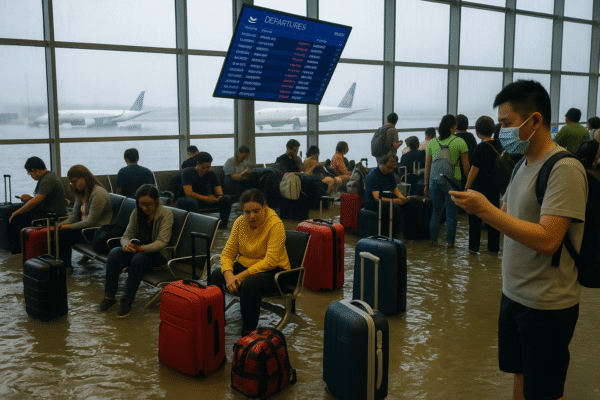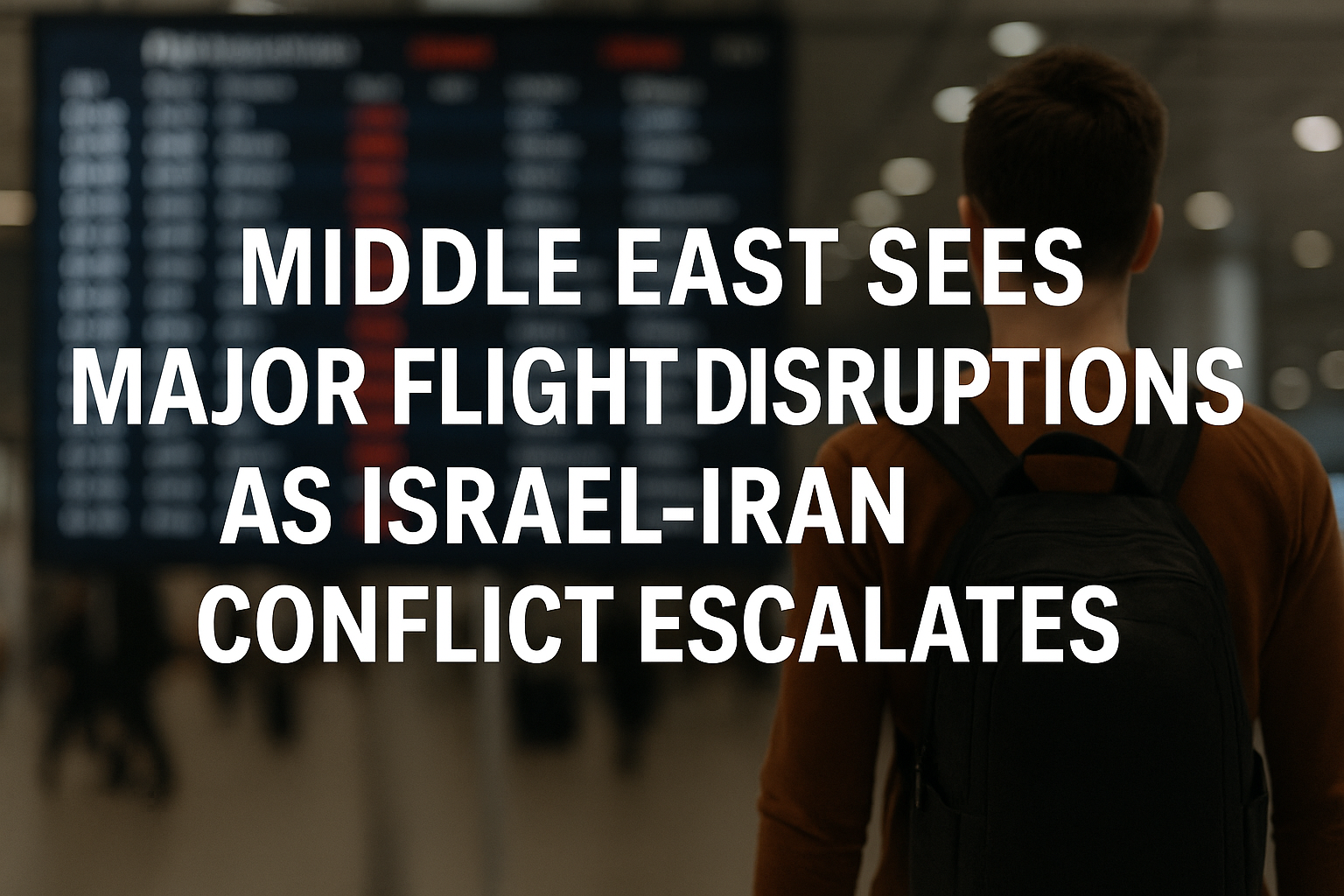Middle East Tourism Suffers Massive Blow as Israel-Iran Conflict Grounds Flights and Closes Airspace
The escalating conflict between Israel and Iran has sent shockwaves through the Middle East’s aviation and tourism sectors, causing more than 500 flight cancellations and widespread travel disruptions across Qatar, Saudi Arabia, the UAE, Bahrain, Oman, and beyond. As tensions mount, airspace closures and suspended airline services have left tens of thousands of passengers stranded, posing a grave threat to the region’s booming tourism industry.
Flight Cancellations Spread Across Middle Eastern Skies
Major airlines, including Emirates, Qatar Airways, Flydubai, Etihad Airways, Air Arabia, and Lufthansa, have suspended or rerouted flights to conflict-affected zones such as Iran, Israel, Iraq, Syria, and Lebanon. Emirates halted flights to Iraq and Lebanon until mid-June, while Qatar Airways temporarily suspended services to Iran and Syria. Flydubai also halted operations to key capitals including Amman, Beirut, and Tel Aviv.
Etihad and Air Arabia have canceled numerous connections to Israel and Iran, while European carriers like KLM, Ryanair, and SWISS International pulled out of Tel Aviv routes. Delta and Air France suspended North America–Middle East services, citing safety concerns.
Closed Airspace Brings Regional Aviation to a Standstill
Ben Gurion International Airport in Tel Aviv and Tehran’s Imam Khomeini International Airport remain largely non-operational. Iraq, Jordan, and Syria have partially or fully closed their airspaces, compounding difficulties for airlines attempting to reroute.
The result has been a scramble for alternate routes over the Mediterranean or the Arabian Peninsula, placing operational pressure on international hubs like Dubai International Airport (DXB), Hamad International Airport (DOH), and Abu Dhabi International Airport (AUH).
Global Travel Ripple Effect
The crisis has not remained regional. Air India, Lufthansa, Wizz Air, and Turkish Airlines have all altered transcontinental routes to avoid conflict zones, adding hours to flight times and increasing fuel costs. Over 150 airlines globally have had to change or cancel scheduled flights, causing logistical bottlenecks across Europe and Asia.
Tourists Stranded Across the Region
In Israel alone, an estimated 31,000 international tourists have been stranded since the closure of Ben Gurion Airport. The Israeli Ministry of Tourism has initiated emergency coordination with international embassies to facilitate chartered evacuation flights.
Iran has faced similar challenges, with foreign nationals trapped due to suspended commercial air operations. Hotels in Tehran, Isfahan, and Shiraz are reporting near-full occupancy as stranded tourists seek refuge amid mounting travel uncertainty.
The UAE, Qatar, and Bahrain—major layover hubs for travelers from Asia to Europe—are witnessing long queues, booking delays, and rebooking chaos. Although regional governments have offered assistance to travelers, limited flight availability has prolonged the crisis.
Economic Shock to a Booming Industry
The timing of this crisis could not be worse for the Middle East’s tourism sector, which had been riding a wave of post-pandemic recovery and record-breaking growth. Dubai was projected to welcome over 18 million international visitors in 2025, fueled by Expo extensions and major sporting events. That momentum has now stalled.
Saudi Arabia’s Vision 2030, which prioritizes tourism diversification, is also facing setbacks. Major attractions like the Red Sea Project, Riyadh Season, and AlUla experiences expected an influx of visitors this summer. Flight disruptions have dampened booking trends and derailed plans for large-scale events.
Bahrain and Oman—emerging as luxury and adventure tourism hubs—are now suffering from a sudden tourist pullback, as travelers cancel trips due to fears of regional instability.
Government Travel Advisories Heighten Concerns
Governments worldwide are urging their citizens to avoid non-essential travel to the Middle East. The U.S. State Department issued a Level 4 advisory for Iran and Israel. The UK and EU also cautioned against travel to Iraq, Lebanon, and Jordan. Australia has dispatched defense personnel to support evacuation missions for nationals stuck in Iran.
Travel insurance companies have begun excluding coverage for cancellations due to geopolitical conflict, adding financial stress to stranded travelers.
What’s Next? Recovery Will Be Long and Complicated
Tourism ministries across the region are scrambling to formulate response plans. Israel and Saudi Arabia are already discussing phased reopening of air corridors, while the UAE is accelerating domestic tourism initiatives to offset losses.
Analysts estimate the immediate economic loss to regional tourism may exceed USD 3.5 billion in just two weeks. With airlines facing skyrocketing insurance premiums and rerouting expenses, ticket prices are expected to climb, further dampening demand.
Outlook: A Test of Resilience for Middle Eastern Tourism
Despite the crisis, industry experts remain cautiously optimistic. The region’s tourism infrastructure is robust, and traveler interest remains strong for destinations like Dubai, Doha, and Riyadh once stability returns. However, rebuilding trust, ensuring flight safety, and diplomatic de-escalation are essential to chart a path forward.
The Israel-Iran conflict has not only exposed the geopolitical fragility of the region’s tourism boom but also underscored the urgent need for strategic resilience planning. With millions of dollars in daily losses, this is more than a temporary disruption—it’s a crossroads for one of the world’s fastest-growing travel regions.
For more travel news like this, keep reading Global Travel Wire

















